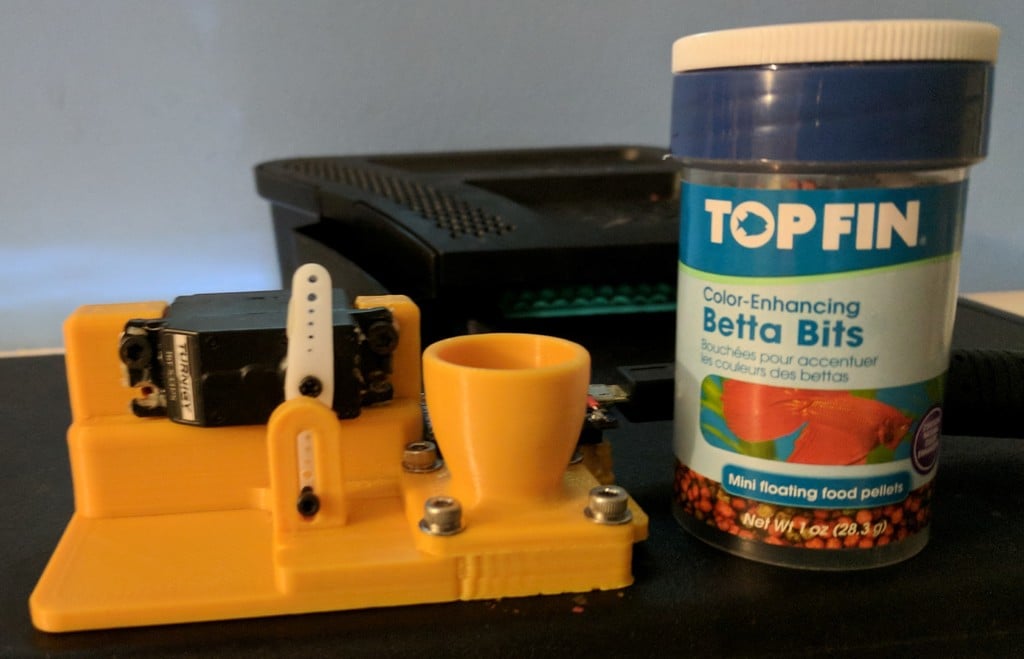
Automatic Fish Feeder
thingiverse
This is an automatic fish feeder built using Arduino. After trying several other automatic fish feeders listed online with no luck, I decided to design my own system. The feeder is specifically designed to dispense small food pellets such as Top Fin Betta Bits shown in the photos. A circular hole on the feeder arm moves past a feeding bowl to meter out a small amount of food per actuation. If your fish require more or less food, simply update the code to adjust the feed interval. I recommend testing the mechanism by running it over a piece of paper to ensure reliable feeding for your chosen food and correct dosage per cycle. The "arm rev1" feeder dispenses about 0.15 cm^3 of fish food per dose, while the optional "arm 6mm rev1" dispenser releases approximately half this amount, or 0.08 cm^3 per dose. I've been using ultra-fine ground guppy food and found that smaller doses twice a day work best for my fish (which would require adjusting the code as well). There are various STL base components included to accommodate different servo sizes. I used a Turnigy TGY-53317S servo, but any mid-sized servo will work. However, be mindful of your servo's power draw and whether your chosen Arduino can supply enough current. You may need to use washers or similar parts to provide the correct standoff distance between the base and servo for proper alignment. I used an Arduino Pro Micro, but any model will work. The Pro Micro I have seems a bit finicky, so I suggest trying another flavor of Arduino, such as a Nano. To make it easier to swap out servos, I created a short cable from a servo extension. I connected the servo's positive lead to RAW, negative lead to GND, and signal lead to pin 3 (which must be a PWM output). A sample Arduino code is included in the download files for this project, as well as on my blog at http://andy-projects.blogspot.com/2017/09/arduino-controlled-3d-printed-automatic.html. When powering the Pro Micro, I used a 1+ amp USB wall wart and it worked reliably for a week-long vacation. When assembling and setting up the feeder, be sure to adjust the servo arm location and degrees of travel to achieve proper function and prevent servo buzz in the rest position.
With this file you will be able to print Automatic Fish Feeder with your 3D printer. Click on the button and save the file on your computer to work, edit or customize your design. You can also find more 3D designs for printers on Automatic Fish Feeder.
